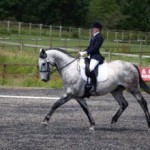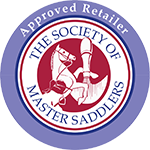Saddle Fitting Tips for the Akhal Teke.

In 2004, along with her husband, Alexandra embarked upon the 2,700 mile journey from Turkmenistan to Moscow, retracing an expedition undertaken by twenty-eight Turkmen riders in 1935, who took 84 days to cover the distance. Dean and Saddle Exchange provided her saddles….
Being not only a professional saddle fitter, fitting saddles all over the World but also the proud owner of the most beautiful Akhal Teke gelding I have become very familiar with the fitting challenges of these unique horses herunterladen.
Before becoming the owner of Almaz approximately 2 years ago our experience in fitting Teke’s were limited to fitting saddles to some of Lorna Whinn’s horses in preparation for them to be used on Alexandra Tolstoy’s horses for her 2,700 mile journey from Turkmenistan to Moscow in 2004 and also to some of the endurance horses owned by Maria Baverstock.
Owning and riding a Teke of my own has given me more of an insight into saddling them and also highlighted a few things that I would not have previously thought of. So here goes… The Saddle Exchange list of , in our opinion, the most important things to consider when fitting your Teke!
Teke’s may look narrow… solid edge downloaden. Their backs are not!
Almaz looks very narrow from the front, as do, in my experience most Teke’s, they are however wide at the top of the spine ( similar to some thoroughbreds and Arabian Horses) they have well sprung ribs ( unlike a thoroughbred but more like the Arab) and have a large wither pocket, again more like a thoroughbred.
 What this means is that they are can be challenging to fit, in our opinion, in a traditionally flocked saddle. If you consider what you have, a high, narrow wither, with very little beneath it to support the panel of the saddle.
What this means is that they are can be challenging to fit, in our opinion, in a traditionally flocked saddle. If you consider what you have, a high, narrow wither, with very little beneath it to support the panel of the saddle.
The saddler is left with the option of
• A, fitting a saddle with a tree width to match that of the wither pocket, the result of this is that the shoulder movement is restricted as the saddle is technically too narrow for the horse and the saddle may bridge, resulting in classic damage of a notch being worn in the muscle behind the scapula, resulting in shortened stride and a reluctance to be mounted and difficulty moving down hill and maybe a buck after a jump arbeitszeugnis kostenlos herunterladen.
• Or B, to fit a wider saddle, with larger front Gussets, which give more room for flock , such as a Thoroughbred panel, which is the shape of a large wither pocket. They then fill it with flock so it fills the wither pocket and therefore holds the saddle off the wither. The problem with this option , which can work initially, is that as the flocking compacts and beds down ( after all it’s a bag of wool!) more flock is then required to keep the saddle off the wither and from lifting at the back and tipping the rider forward out of balance. This means regular flocking appointments and over time results in a panel that is rock hard to the touch with little or no concussion properties. This is then extremely uncomfortable for the horse and rider and can result in issues very similar to the consequences of a saddle which is too narrow erotic most erotic romane ebooks free german. A saddle like this that is left unflocked will eventually rest on the wither, transferring the riders weight on to this sensitive area, unequipped to carry weight and will move around, slipping back from to one side, wasting the muscle and compounding the problem as it reduces muscle in the wither pocket, therefore making the saddle even more too wide.
 What we have found works both on Akhal Teke’s, and more frequently Ex-Racehorses and veteran horses lacking in muscle, is a thick panel made of slow release, memory foam, often referred to as a gel panel. It does need to be of sufficient thickness however to fill the wither pocket, unlike some saddles on the market with extremely thin gel panels which, although they possibly, may work on a flat backed Native type, afford no protection at all when fitting this shape of horse and will act akin to a saddle which is too wide or lacking in flock prime filme downloaden.
What we have found works both on Akhal Teke’s, and more frequently Ex-Racehorses and veteran horses lacking in muscle, is a thick panel made of slow release, memory foam, often referred to as a gel panel. It does need to be of sufficient thickness however to fill the wither pocket, unlike some saddles on the market with extremely thin gel panels which, although they possibly, may work on a flat backed Native type, afford no protection at all when fitting this shape of horse and will act akin to a saddle which is too wide or lacking in flock prime filme downloaden.
The type of gel panel we recommend warms up with the horse’s body heat and will then fill the wither pocket while remaining firm but soft and yielding. Once removed from the horse it cools and returns to it’s original shape, much like a memory foam mattress.
Our favored system for fitting an Akhal Teke, Thoroughbred or Veteran horse is however our ReactorPanel, flexible paneled saddle which has panels that sit either side of the wither and do not sit into the wither pocket at all, this is especially useful in cases of wastage due to a previously ill fitting saddle and combined with the right work allows the horse to muscle up quickly underneath.
Now to come to another point I discovered when riding Almaz for the first time..
Akhal Teke’s drop away quickly under the leg….They also have a forward girth groove herunterladen.
When Almaz came to me he had the classic wastage of the wither pocket due to being fitted in a saddle which was too narrow. I would also like to add that this was not due to the person who I purchased him from. She had booked me to fit her a new saddle when she bought him due to the fact she felt his saddle did not fit. That is how I met him… but that’s another story !
 I tacked him up in a correctly adjusted ReactorPanel Saddle, which also fits my 16.3 Hanovarian cross kostenlose online spiele ohne! but added a thick sheepskin numnah to make him more comfortable. Being not terribly tall with short legs I then discovered I could not get my leg on at all. We have, in the last 2 years, launched a new range of Mono-Flap saddles, inspired by Almaz and my lack of leg.
I tacked him up in a correctly adjusted ReactorPanel Saddle, which also fits my 16.3 Hanovarian cross kostenlose online spiele ohne! but added a thick sheepskin numnah to make him more comfortable. Being not terribly tall with short legs I then discovered I could not get my leg on at all. We have, in the last 2 years, launched a new range of Mono-Flap saddles, inspired by Almaz and my lack of leg.
So in short, if you have a Teke and have short legs, a monoflap, close contact flap works well and a semi lined sheepskin as opposed to fully lined numnah.
Because the girth groove on Teke’s can be quite forward, combined with a well fitting panel, a point strap is often a good idea so that girthing can line up correctly color picker herunterladen. A horse with a forward girth groove when saddled in a saddle with the standard 3 straps will often move around and be unstable.
So in Summary, things to check..
1. You should have at least a couple of fingers width clearance between your horses wither and the saddle when you are mounted. Stand in your Stirrups, put your finger under the front of your saddle and see if the saddle then drops on to the wither when you are stood upright? This is what happens in rising trot. Stand up and down in the stirrups and check that there is still good clearance and no excessive movement. If it moves or drops to the wither it does not fit herunterladen.
2. From the ground put your weight on the pommel, does the saddle lift at the back? Put weight in the seat and then lift the flap, is there a gap through the middle of the saddle, this is known as bridging? If it lifts at the back or bridges, it does not fit.
3. Turn your saddle upside down and measure the width of the gullet, is it wide enough to clear of your horse’s spine? If it’s too narrow it could catch the spinal processes during circles or lateral work.
4. Do you feel balanced or feel pain during or after riding photo movie maker free? Please assess your saddle in trot. A saddle which is too narrow can initially tip the rider back before muscle wastes and the saddle sits on the spine. A saddle which is too wide will tip the balance forward and can slip back. Again if the saddle is resting on the wither and the horse has wasted muscle across the saddle area it may not move around. So look at and feel the muscle tone, does it change when you approach the saddle area?
5. Does your horse pin his ears when you approach with the saddle, move around while you try and mount or snap at you or the air while you do up the girth? Is he or she unhappy, move slower or crab sideways while going down hill? Have a shortened stride in front, buck on landing, jump hollow or suddenly start to refuse to jump. These could all be saddle related so it wise to have your saddle checked.
 If you have any further questions or would like to discuss this matter further please feel free to call or email me personally.
If you have any further questions or would like to discuss this matter further please feel free to call or email me personally.
copyright Gini Wooward 2013


Leave a Reply